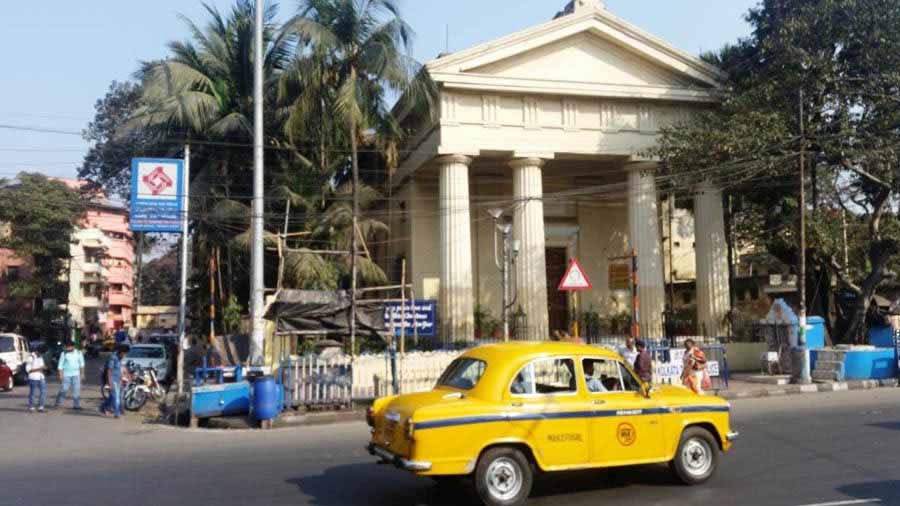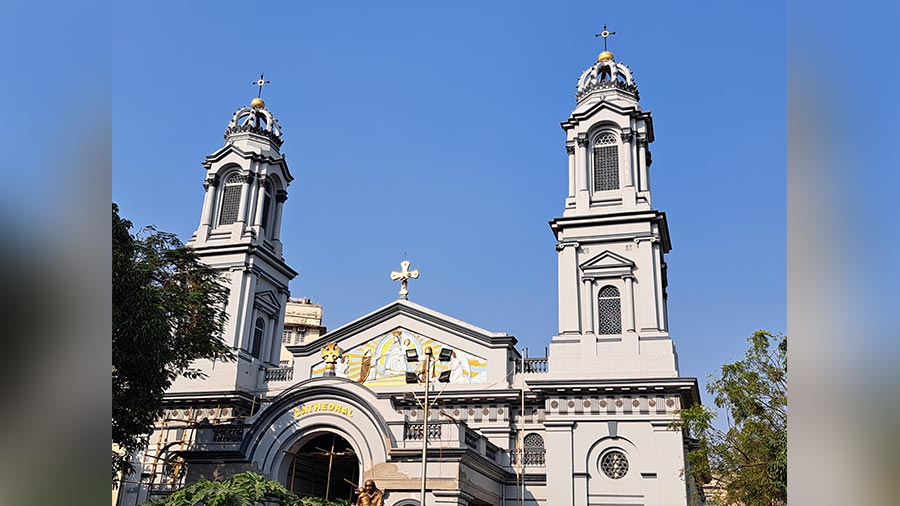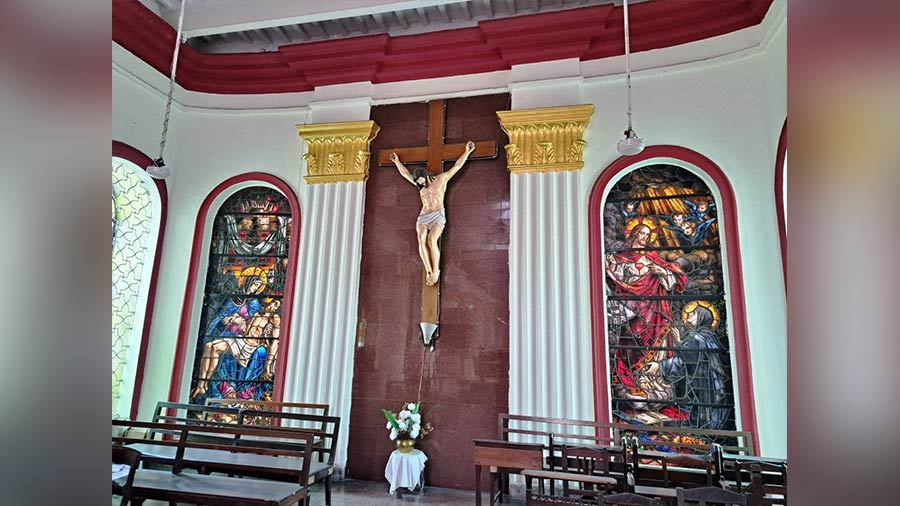When did Calcutta first see the influx of refugees uprooted from their land and coming to this city for shelter? If one thinks the answer is 1947 at the time of partition of India, then he/she is mistaken.
Amazing it may sound, but facts say it was between 1768 and 1778, during the battle in Europe between Russia and Ottoman empire, when a large number of Greek people got uprooted from their homes in Philippou Polis and Adrianopolis — the two towns which are now part of modern day Bulgaria.
The victory of Russians in the war forced a huge number of Turks and Greeks to move towards the east and many of them chose Calcutta then, the emerging new trading port under the British East India Company. At the same time another train of Greek migrants entered Calcutta from Cappadocia and Aegean island. It made Calcutta a home for sizable numbers of Greeks, a race not famous for colonising a visiting country in the modern era.
Greeks, who were good in ship making and other businesses, settled down in Calcutta only to add more colours in its cosmopolitan character. Though they were never as successful as their British and French counterparts and never dared to influence local politics as other two races did, still by the end of 1940s, a sizable population of Greeks in Calcutta proved their cordial attachment with the city.

The entrance to the church
Like any other community, Greek also felt the need of a church and that culminated into the establishment of their first church in 1752 at today’s Murgihata area near Canning street, a place already inhabited by the Portuguese. The first church was known as the Greek Church of Transfiguration. Though the exact location of this first Greek church is still not detected by historians, the presence of two gravestones — one of 1713 and another of 1728 written in Greek language inside the Portuguese church of Canning street — prove that the place must be near it. Some are of the opinion that it was near present day Ezra street.
Soon one more church by Greeks came up in Amratala street of north Calcutta in 1781 (some historians think it was in 1770).
The permission to construct this church was sanctioned by Warren Hastings himself.
One rich Greek trader, Panaghiotis Alexios Argyree, who came to India as an interpreter of another Greek person named Captain Thornhill funded the church out of his commitment made to Jesus Christ. It is believed that while coming to India his ship confronted a storm in mid sea and he prayed to God for life with a promise to build a church if he lands alive on the shore. Thus, after landing in Calcutta, he obtained permission from Warren Hastings to build this church. Apart from him, all local Greek businessmen who signed the appeal letter to Hastings also contributed to this. Rev Nikiforos was the first priest of this Greek church.
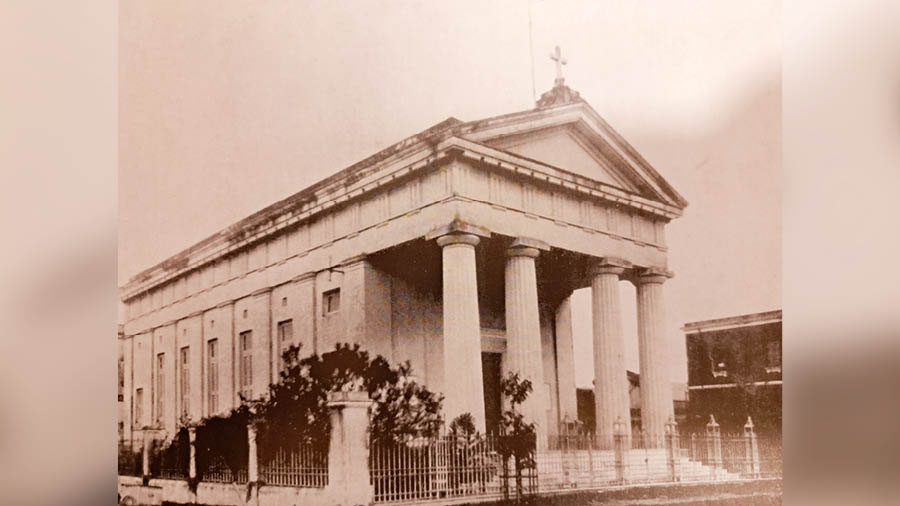
An old pic of the church
The church went operational from August 6, 1781. Initially, there was a cemetery adjacent to the church but with increasing Greek population in the city, they set up a new cemetery in Phoolbagan in 1777.
This church was operational for more than a century and it became the socio-cultural hub of local Greeks. However Greeks in Calcutta later on blended with other Europeans mainly with Armenian and British to lose their distinctive identity. Nevertheless their presence in the city’s commercial world, club, sports arena and police force proves they were still a rocking community both in Calcutta and Dhaka.
In 1924, local Greeks closed their Amratala church and moved to Kalighat where a new church in typical Greek temple style was built. The foundation stone of the church was laid down on November 3, 1924 and it was opened to the public on November 19, 1925. This is now called the Greek Orthodox Church. The church construction was fairly funded by family members of the famous Greek Company Ralli Brothers, a mercantile house in the business of silk, cotton timber etc. This company was in India since 1851 and once raised one of the most beautiful sandstone office buildings in Calcutta’s Dalhousie square named Ralli House. The building still stands majestically.

A plaque written in Greek that adorns the top of the main gate of the church
This new Greek church now stands near the Kalighat tram depot with near zero attention from people is perhaps the most neglected colonial heritage of Calcutta.
Built in a typical Greek temple with an array of beautifully erected Doric columns that hold a massive triangular pediment in its front façade, the church is fenced with colonial iron railing from the front side. There are few dedicated marble plaques written in Greek and English on its outer wall. One tablet cemented on the outer wall reads about a memory of one Demetrius Galanos who died in Benaras on May 3, 1833. There is a plaque written in Greek that adorns the top of the main gate of the church.
The colonnade corridor with a few steps of stairs ends at the threshold of the well-polished door of the church.There are three doors on the front.
The church is small in size. So the gap between nave and altar is short but extraordinarily beautiful. The altar is decorated with exotic paintings describing the life of Jesus, his apostles and many more. Some of the paintings are brought from Greece. The altar contains six such impressive canvas paintings. The rear ends at the altar and the church has no reredos as such.
The ceiling is decorated with elegant chandeliers and the wall contains a few marble tablets and paintings. With its reduced Greek population, the church was practically shut down in early 1972 then it was reopened in the 1980s. It again re-opened after massive repair work in 1991 and ever since it serves the local Christian population. The Greek Embassy in Delhi now plays a role in maintaining the church.
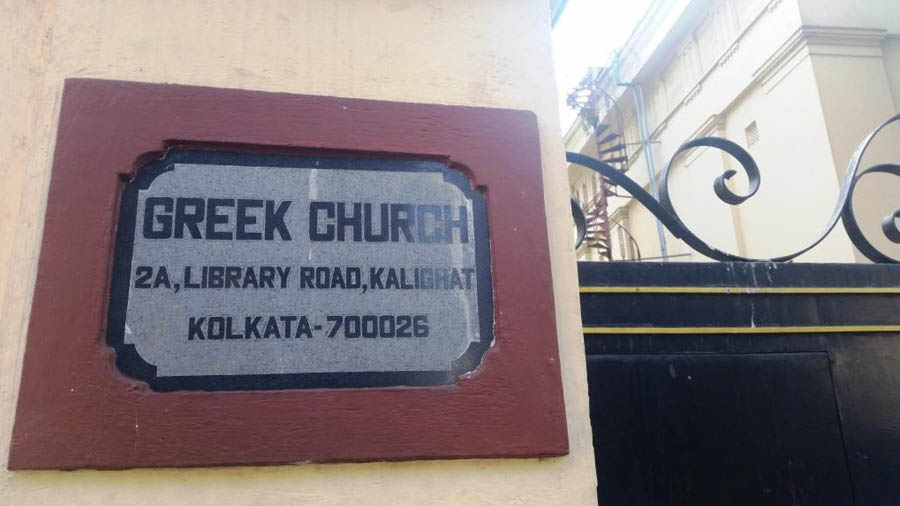
The church address written on a plaque
The atmosphere around the church is really precarious. Thanks to the encroachment of the pavement and an illegal construction of a temple just before its front have added enough visual pollution. Though the church building is very well maintained, it does not attract many visitors for its very low key presence.
By next two years, this church will complete a century and that will be a grand occasion to celebrate Calcutta’s rich Greek heritage. It may attract tourists from Greece as it once attracted the Greek Prime Minister who paid a visit to this church and Phoolbagan’s Greek cemetery in 1998.
His visit proves that though Calcutta has forgotten its Greek connection, Greece has not.
